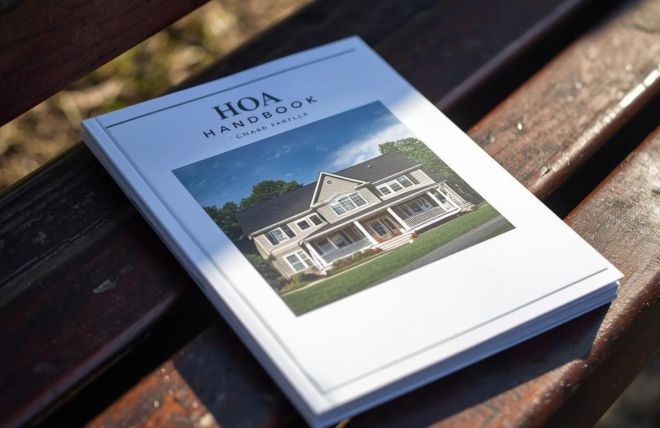In any community association, having clear goals is just the beginning. The real challenge—and opportunity—lies in effectively translating these goals into actionable steps that lead to tangible improvements and successes. Developing a robust action plan is crucial for turning the strategic objectives of a homeowners association (HOA) into reality. This guide will walk you through the process of creating detailed action plans that align with your community's goals.
Step 1: Review and Prioritize Goals
Start by revisiting the goals established during your strategic planning sessions. Ensure that these goals are specific, measurable, achievable, relevant, and time-bound (SMART). Prioritization is key—identify which goals are most critical based on factors such as impact, urgency, and community demand.
Key Considerations:
- Impact on Residents: How will achieving this goal improve the quality of life in the community?
- Resource Availability: Do you have the necessary resources (financial, human, material) to achieve the goal?
- Time Sensitivity: Are there deadlines or external factors that dictate the timing of this goal?
Step 2: Break Goals Down into Manageable Tasks
Divide each goal into smaller, more manageable tasks. This step is essential for making the goals less daunting and more achievable. Each task should have a clear outcome and be assignable to a team or individual.
Example:
- Goal: Improve community safety.
- Tasks: Upgrade lighting in common areas, install security cameras, and conduct safety awareness sessions.
Step 3: Assign Responsibilities
Assign each task to specific board members, committees, or staff members. Assignments should be based on skills, interests, and workload. Ensure that each person or group understands their responsibilities and the expectations attached to them.
Effective Assignment Tips:
- Clarity: Be clear about what each role entails and the expected outcomes.
- Capability: Match tasks with individuals’ or committees’ capabilities and capacities.
- Communication: Establish clear lines of communication for ongoing support and feedback.
Step 4: Develop Timelines
For each task, set realistic deadlines that contribute to the overall timeline for achieving the broader goal. Use a timeline to visualize the sequence of actions and how they fit together over time.
Planning Tool Suggestion:
- Gantt Charts: Use Gantt charts to provide a visual timeline that outlines phases, tasks, and dependencies.
Step 5: Allocate Resources
Identify and allocate the necessary resources for each task. Resources can include budgets, personnel, equipment, and technology. Ensure that resource allocation aligns with the overall priorities and financial capabilities of the HOA.
Resource Planning:
- Budgets: Assign financial resources based on priority and ROI.
- Volunteers: Engage community volunteers for appropriate tasks to enhance involvement and reduce costs.
Step 6: Monitor and Adjust
Set up a system to monitor the progress of each task against the established timelines and goals. Regular check-ins and updates will help keep the tasks on track and identify areas where adjustments may be necessary.
Monitoring Tools:
- Project Management Software: Tools like Asana, Trello, or Microsoft Project can help track progress and facilitate communication.
- Regular Meetings: Schedule regular review meetings to discuss progress, tackle challenges, and make necessary adjustments.
Step 7: Communicate Progress
Keep the community informed about the progress towards achieving the goals. Regular communication can maintain interest and engagement, encouraging community support and participation.
Communication Strategies:
- Newsletters: Provide updates in monthly community newsletters.
- Community Meetings: Discuss progress in regular community meetings.
- Online Platforms: Use the HOA’s website or social media channels to post updates.
Conclusion
Developing detailed action plans is a critical step in ensuring that your community’s goals are not just visions but realities in the making. By breaking down goals into actionable steps, assigning responsibilities, setting timelines, allocating resources, monitoring progress, and communicating effectively, your HOA can enhance its operational efficiency and achieve greater success in meeting the needs and expectations of its residents.
Sources:
- Athens-Clarke County Unified Government. (n.d.). Starting a neighborhood association guide. https://www.accgov.com/DocumentCenter/View/314/Starting-a-Neighborhood-Association-Guide
- Associa. (2020, August 18). How to create a strategic plan for your community in 5 steps. https://hub.associaonline.com/blog/how-to-create-a-strategic-plan-for-your-community-in-5-steps
- Clark Simson Miller. (n.d.). Budget for a community association: What to consider. https://clarksimsonmiller.com/budget-for-a-community-association-what-to-consider/
- Cedar Management Group. (n.d.). How to plan an HOA community event. https://www.cedarmanagementgroup.com/how-to-plan-an-hoa-community-event/
- American Planning Association, Florida Chapter. (n.d.). Florida Chapter of the American Planning Association. https://florida.planning.org








